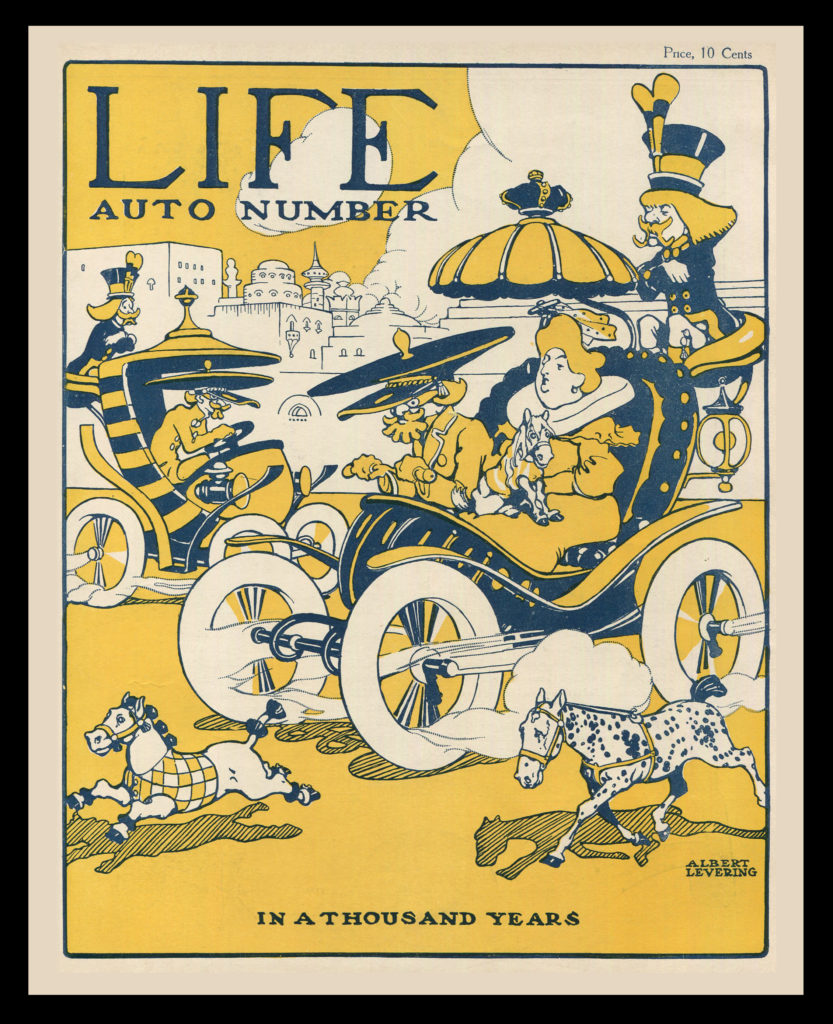America’s Future has always been achieved through American ingenuity
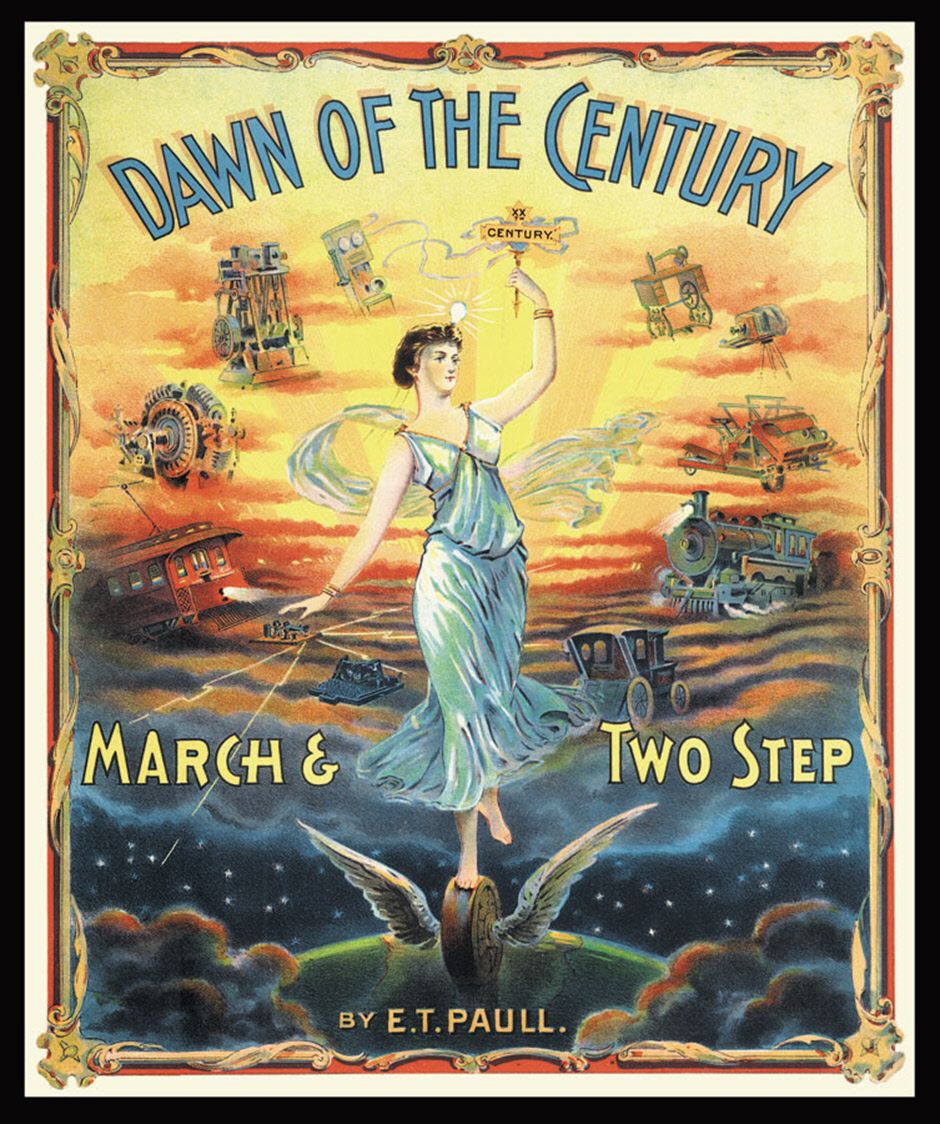
The Ephemera Society’s 2017 conference was entitled “AMERICAN INGENUITY: What’s The Big Idea?” The advances of “this American experiment” have always been dependent upon native inventiveness, and the conference will explore various aspects of American creativity. Our nation went from a rural agricultural economy in 1800 to an urban factory economy by 1900. It was a century of immense change, as we first experienced photography, full-color printing, machine typesetting, mass production in factories, bicycles, automobiles and thousands of other inventions and technological advances. The 20th century brought its own set of modern marvels, and in our current 21st-century progress continues apace.
Along the way, impressed by the speed of innovation, many could resist predicting what future decades and centuries might bring. And the process continues . . . currently in 2016, there is much talk about when mankind will colonize the planet Mars. Humans have been predicting the future since time immemorial. Nostradamus (Michel de Nostredame, 1502-1566) famously prognosticated about all manner of things. Galileo made astronomical predictions, Newton made scientific predictions. It is human nature to speculate about what comes next.
From an ephemera-collecting point of view, there is much such material to seek out, from published (and manuscript) paper to trade cards to newspaper supplements to magazines to various World’s Fair materials to chocolate company see-the-future cards.
One classic such collectible is the set of twelve “One Hundred Years’ Hence” trade cards, stock cards imprinted on the reverse by various companies (at least 14 American advertisers known). Shown below, these cards also appeared in Germany and France (and perhaps Italy). Both the American and European cards were clearly made from the same chromolithographic stones, most likely at the same printing plant, Kuntsdruck-Friedberg in Berlin. For the English language cards, a wider decorative border was added. The image area of the European cards and the non-frame area of the English language cards is exactly the same, 106mm (4.17 inches) x 66mm (2.6 inches).
With each of these cards, it is interesting to notice just which predictions did in fact come to pass, in one fashion or another . . .
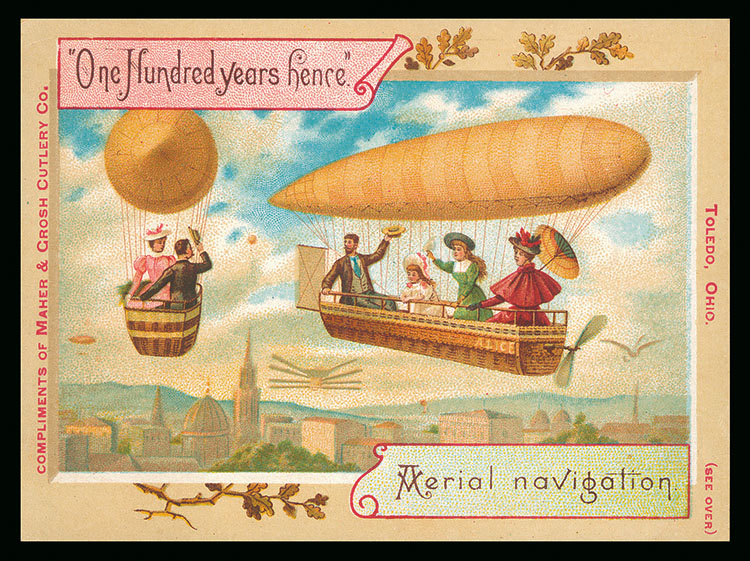
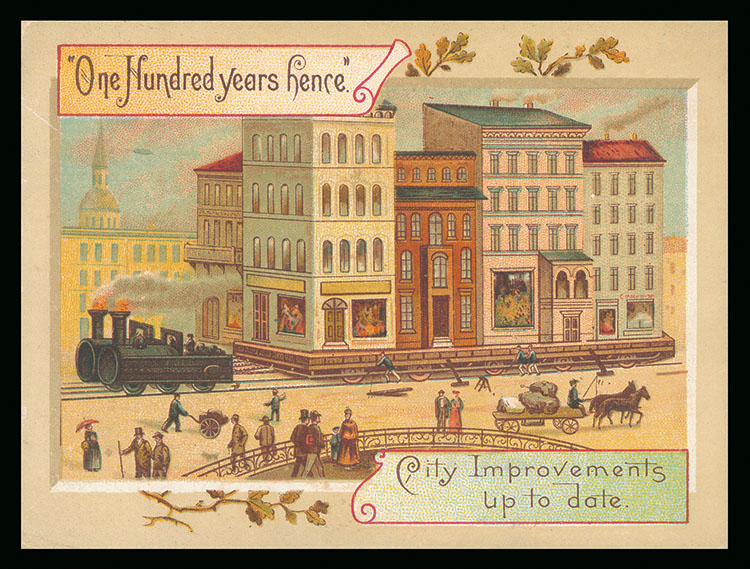
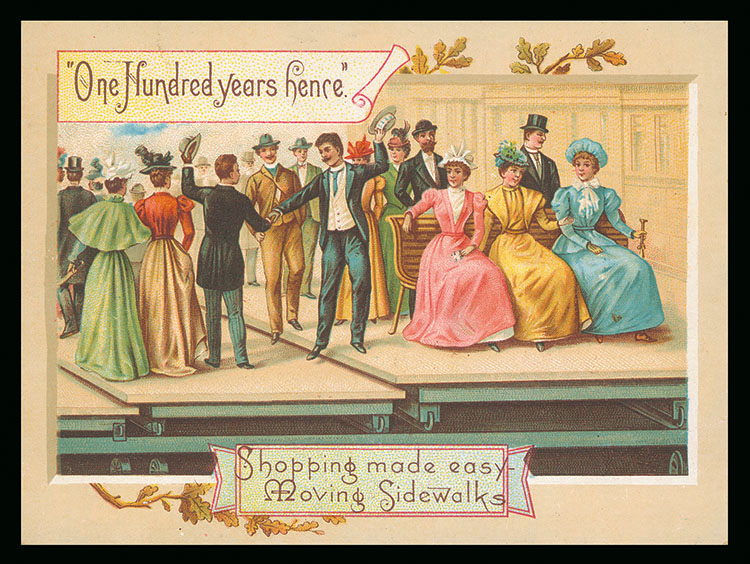
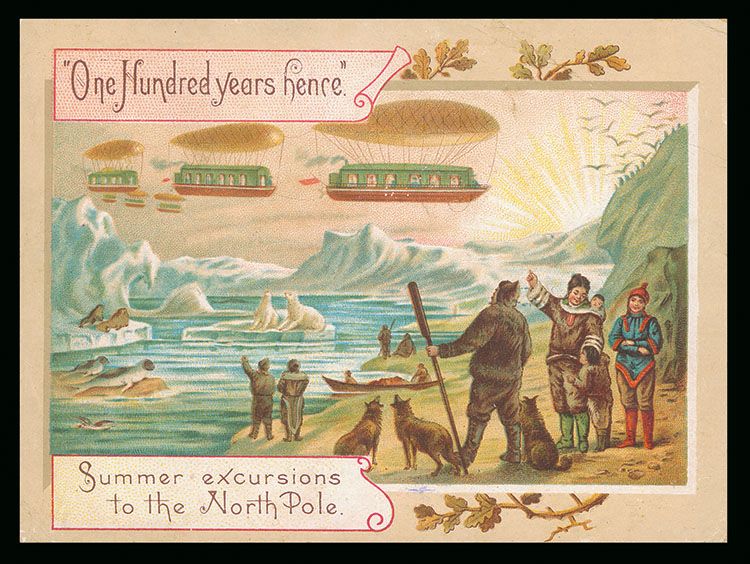
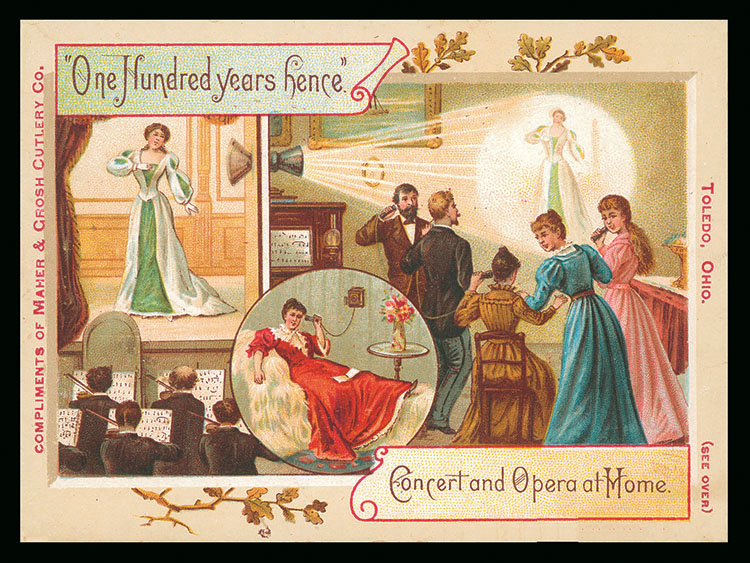
This set is scarce; and for some unknown reason “Cruisers evading and enemy” is exceedingly scarce; in fact its existence something of a mystery amongst collectors for many years until a copy or two finally turned up (although its subject and design was already known from the European sets).
Hereby way of example are eight of the German language versions . . .
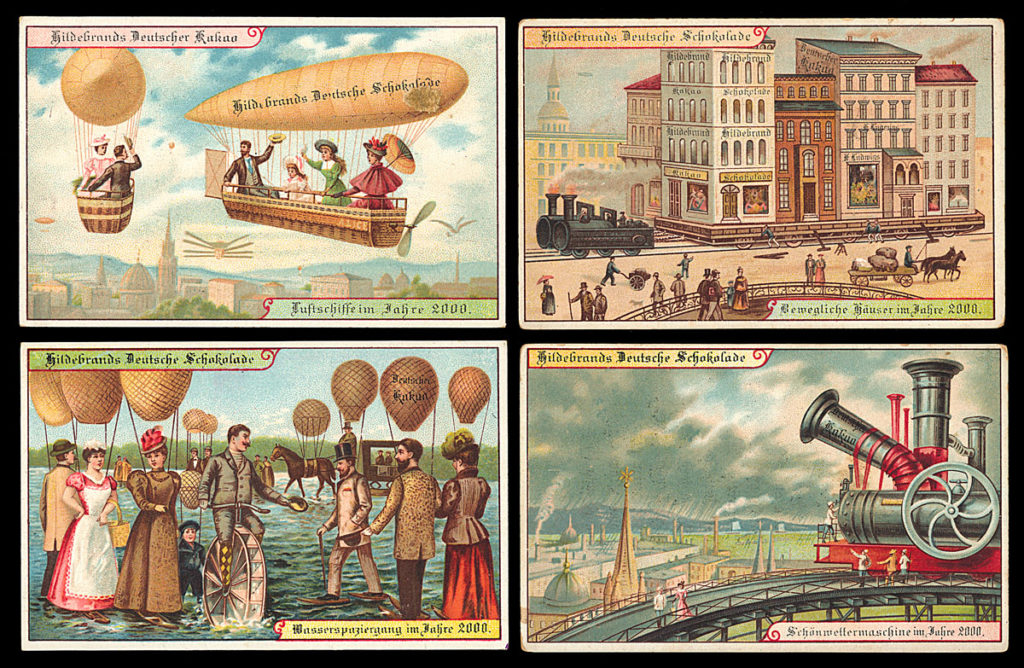
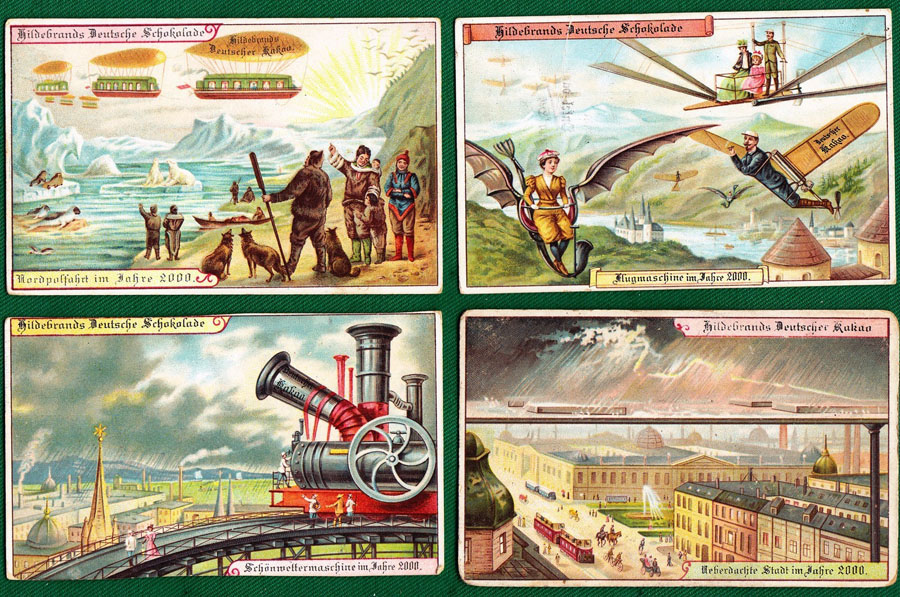
A thorough exploration of the “One Hundred Years Hence” and other futuristic cards, which I wrote, appears in the Winter 1999 issue of The Advertising Trade Card Quarterly. To borrow a bit from that article:
“A series of major expositions highlighted the nation’s—and the world’s—progress in mechanical invention, technology, industrial processes, products, packaging, marketing and household conveniences: the Philadelphia Centennial Exposition of 1876 (dampened only slightly by the setback dealt by the Sioux to Custer in June of that year), the Paris Exposition of 1889 (featuring that amazing feat of engineering, the Eiffel Tower), the Columbian Exposition of 1893, and the Paris Exposition of 1900. A new and better day seemed upon us.”
“As the turn of the century approached, something unusual began to happen. In addition to looking ahead to celebrating the end of the nineteenth century and the beginning of the twentieth, people around the world began to look ahead yet another hundred years to the Year 2000, the turn of the millennium. It became popular to make predictions about the Year 2000.”
The chromolithographed cover of the sheet music for the Dawn of the Century March & Two Step, by E. T. Paull celebrated an array of modern wonders, including the telegraph, telephone, typewriter, horseless carriage, Corliss engine, steam locomotive, farming equipment, modern camera, turbine, sewing machine and electric street railway.
There are a number of other 19th-century futuristic European card sets. Below are three cards from a set of twelve issued by Suchard, a Swiss chocolate and cocoa company . . .
In the nineteenth century, several youth adventure pulp magazines prominently featured futuristic technologies . . .
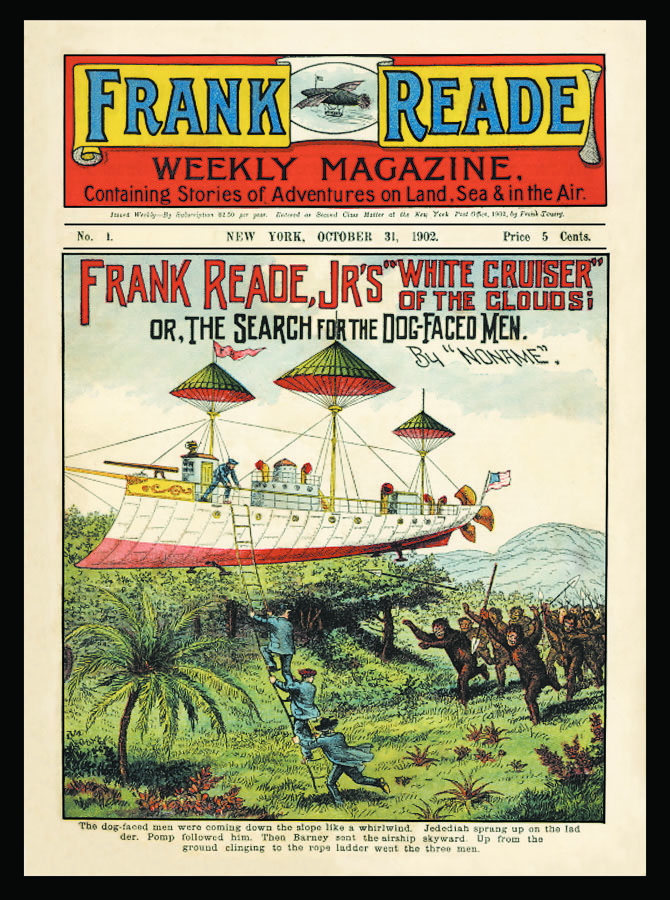
Newspapers were the Victorians’ television, and various newspapers and magazines put out fantasy issues pretending to have been issued close to the Year 2000. In the 1890s the Denver Times ran a now-rare chromolithographed poster datelined “December 31, 1995”. showing current and predicted future technological wonders. (not shown)
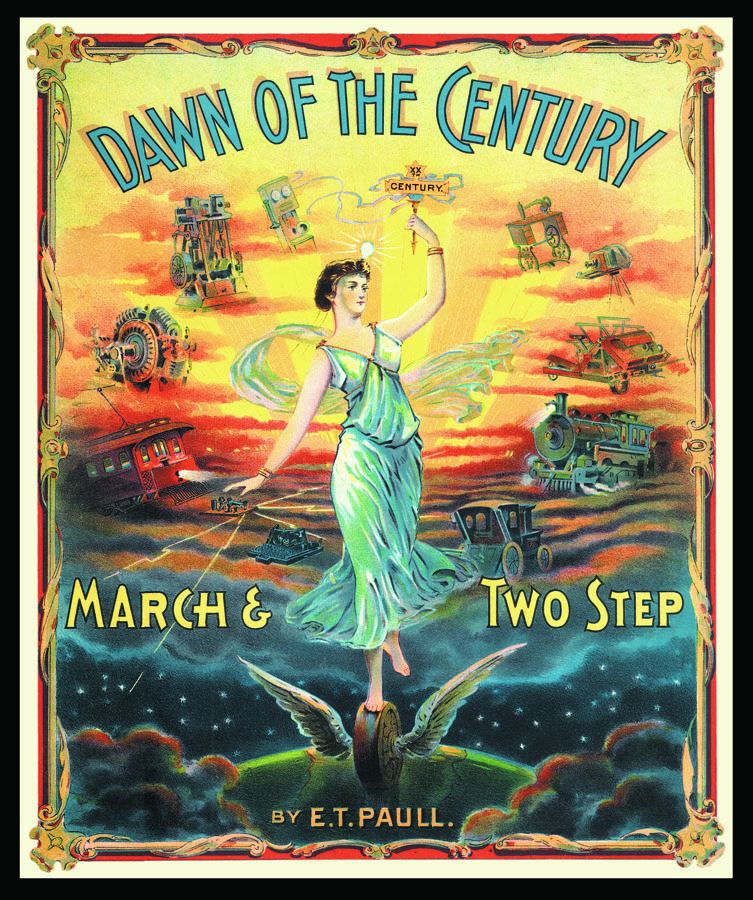
The chromolithographed cover of the sheet music for the Dawn of the Century March & Two Step, by E. T. Paull celebrated an array of modern wonders, including the telegraph, telephone, typewriter, horseless carriage, Corliss engine, steam locomotive, farming equipment, modern camera, turbine, sewing machine and electric street railway.
There are a number of other 19th century futuristic European card sets. Below are three cards from a set of twelve issued by Suchard, a Swiss chocolate and cocoa company . . .
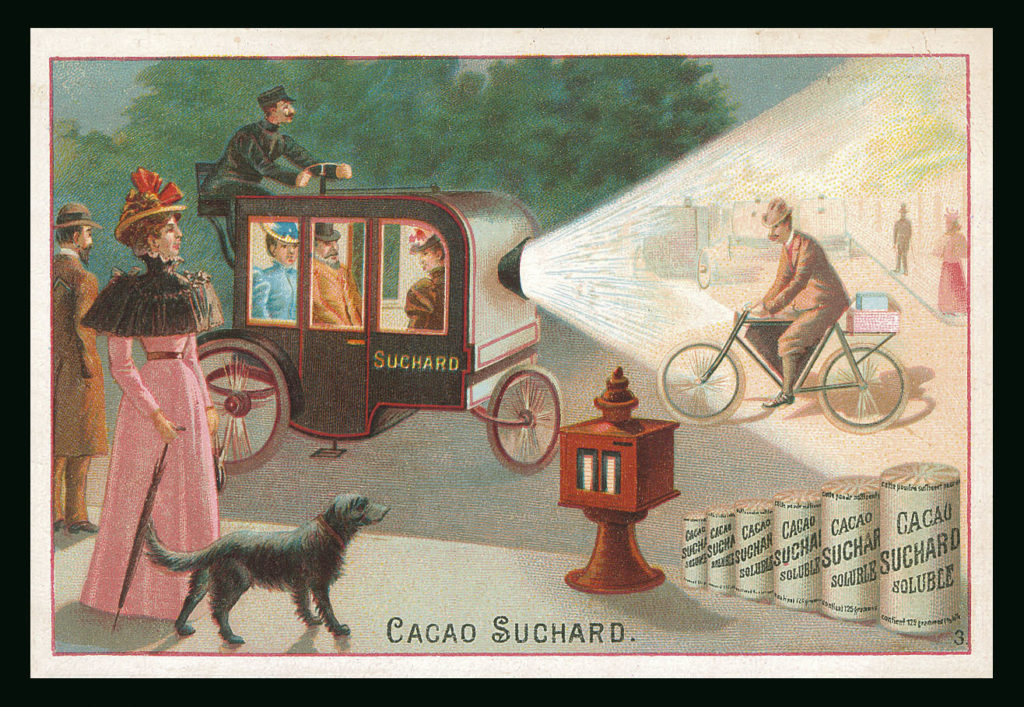
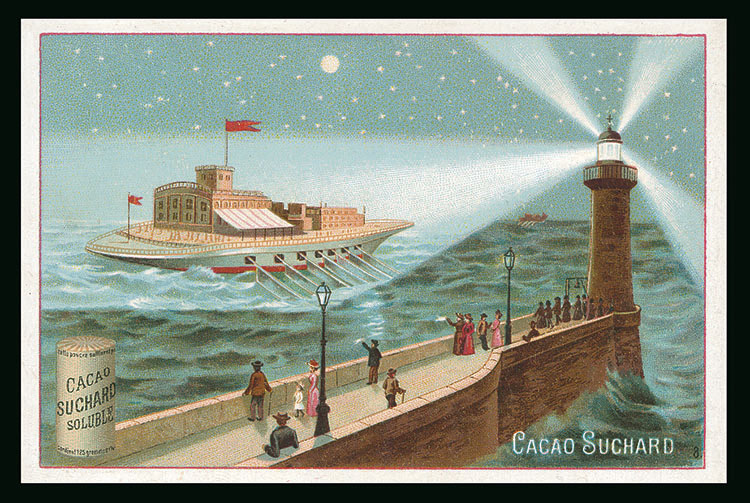
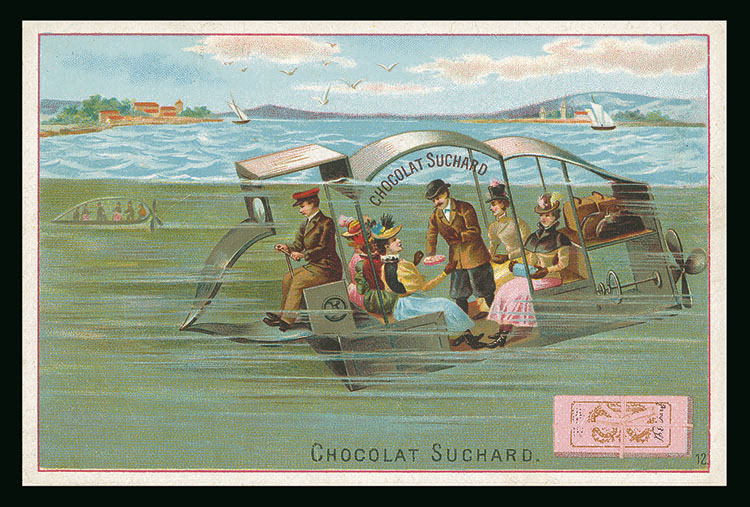
An extensive set of blank-back stock cards in French was entitled En L’An 2000, shown here in uncut sheets from the Grossman Collection . . .
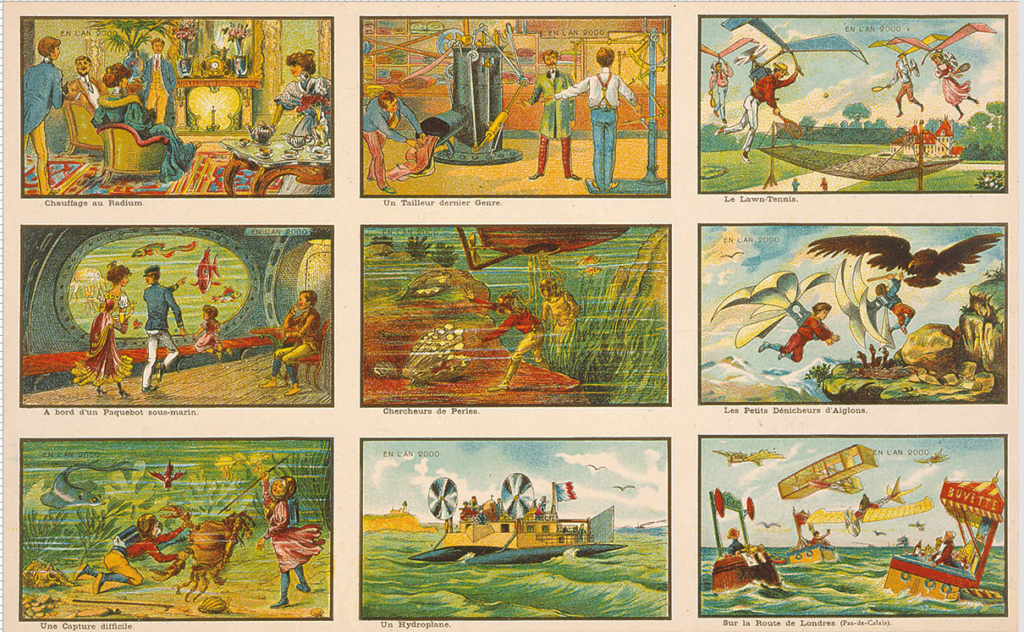
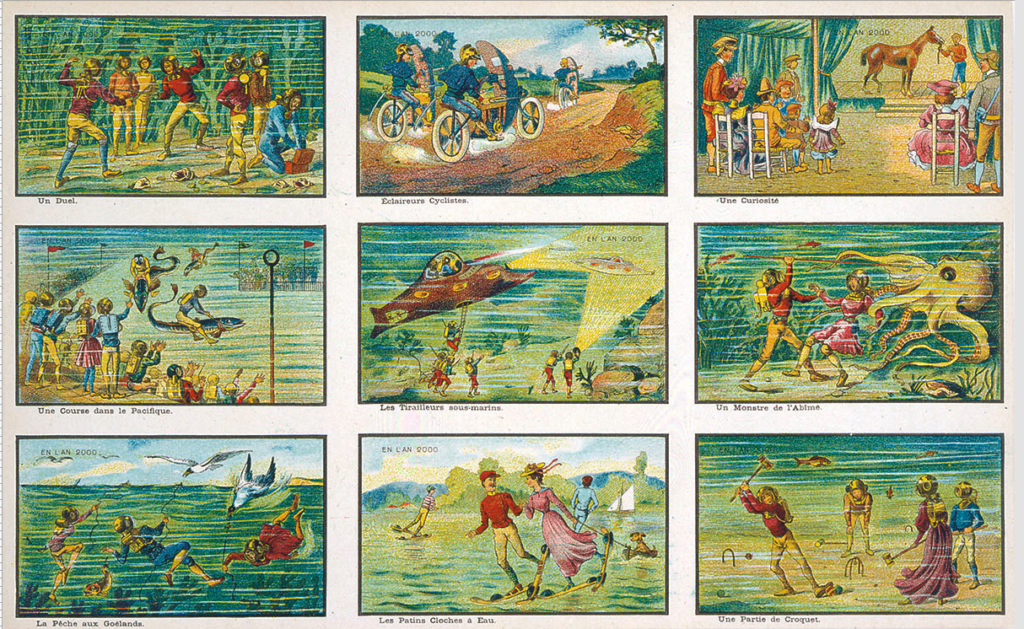
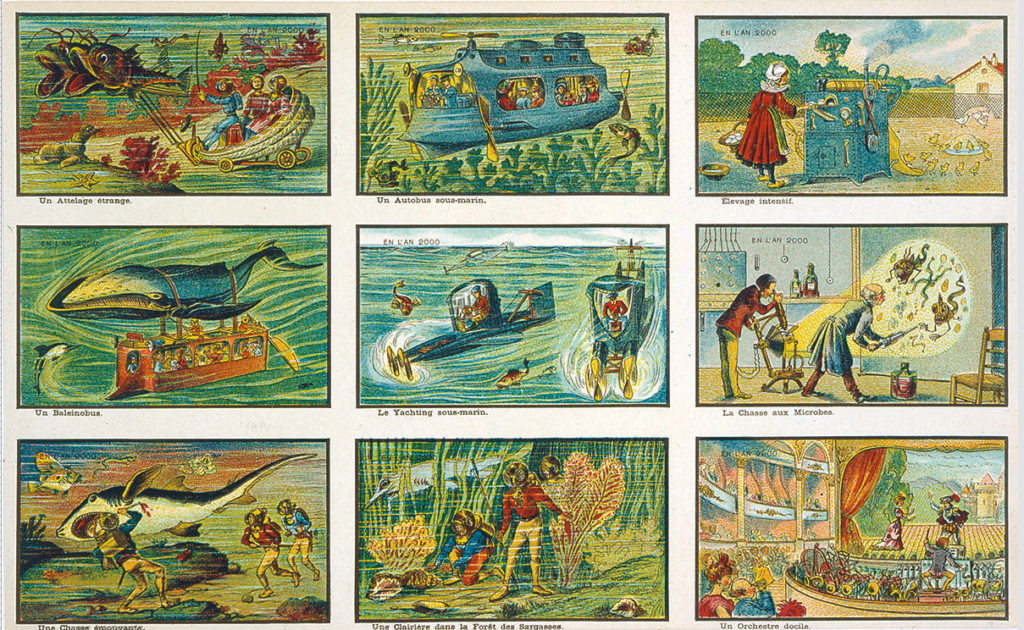
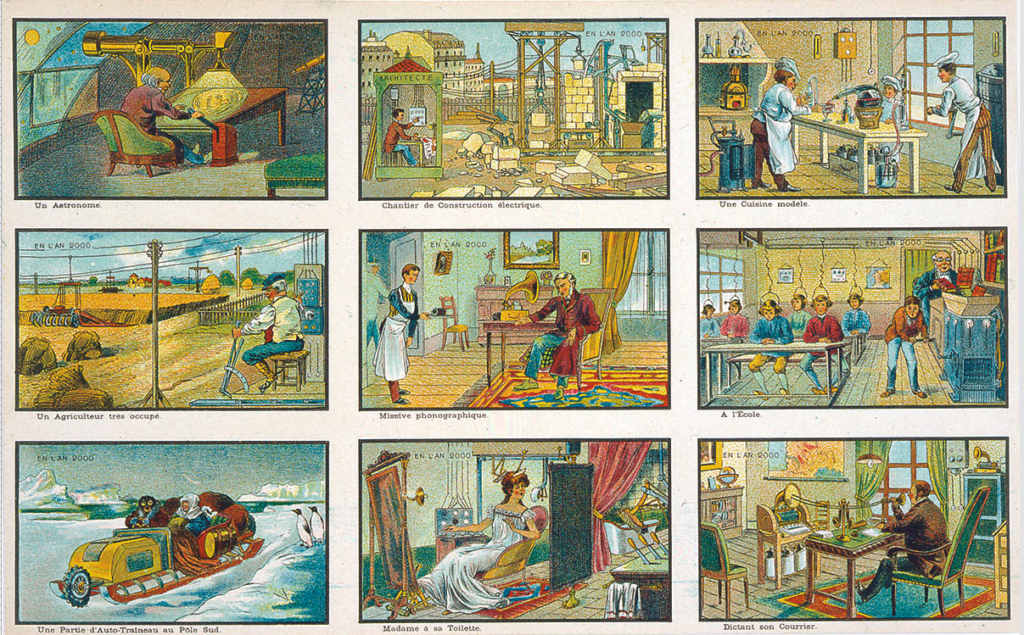
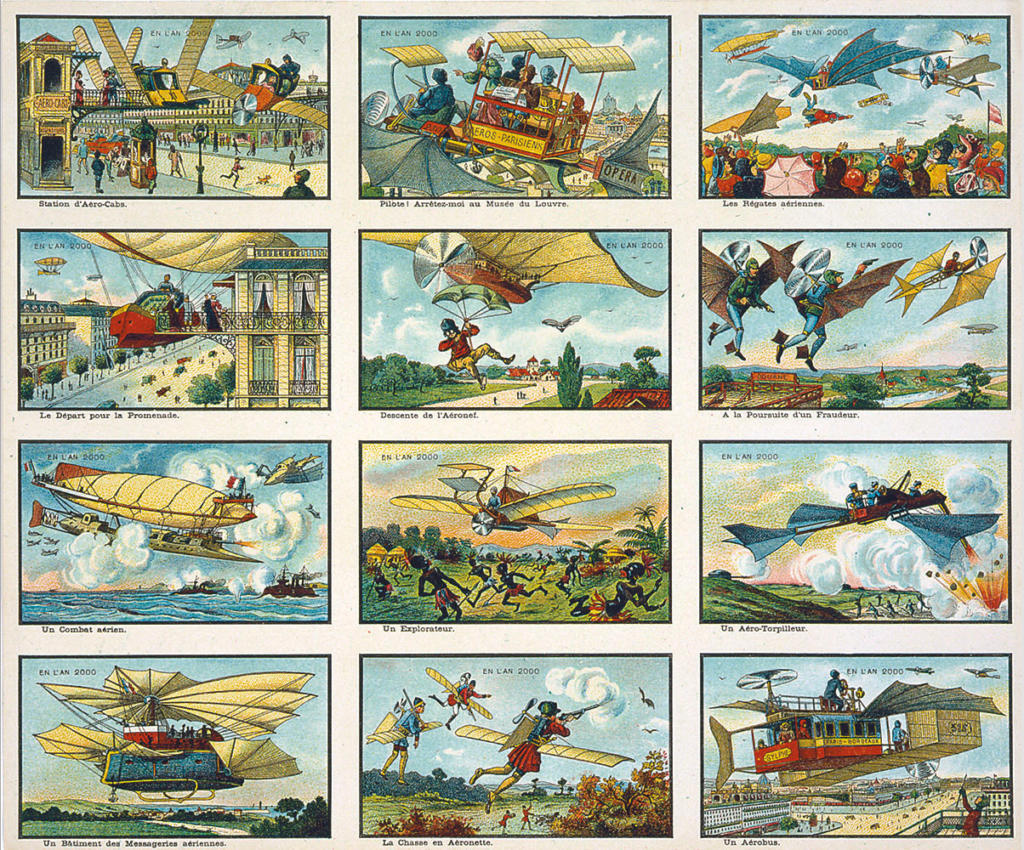
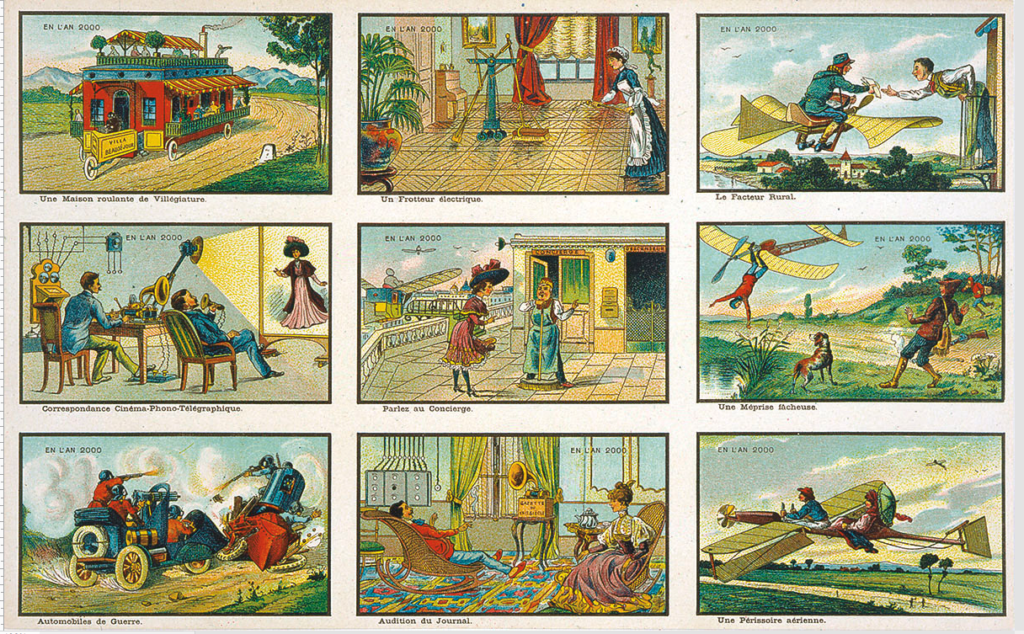
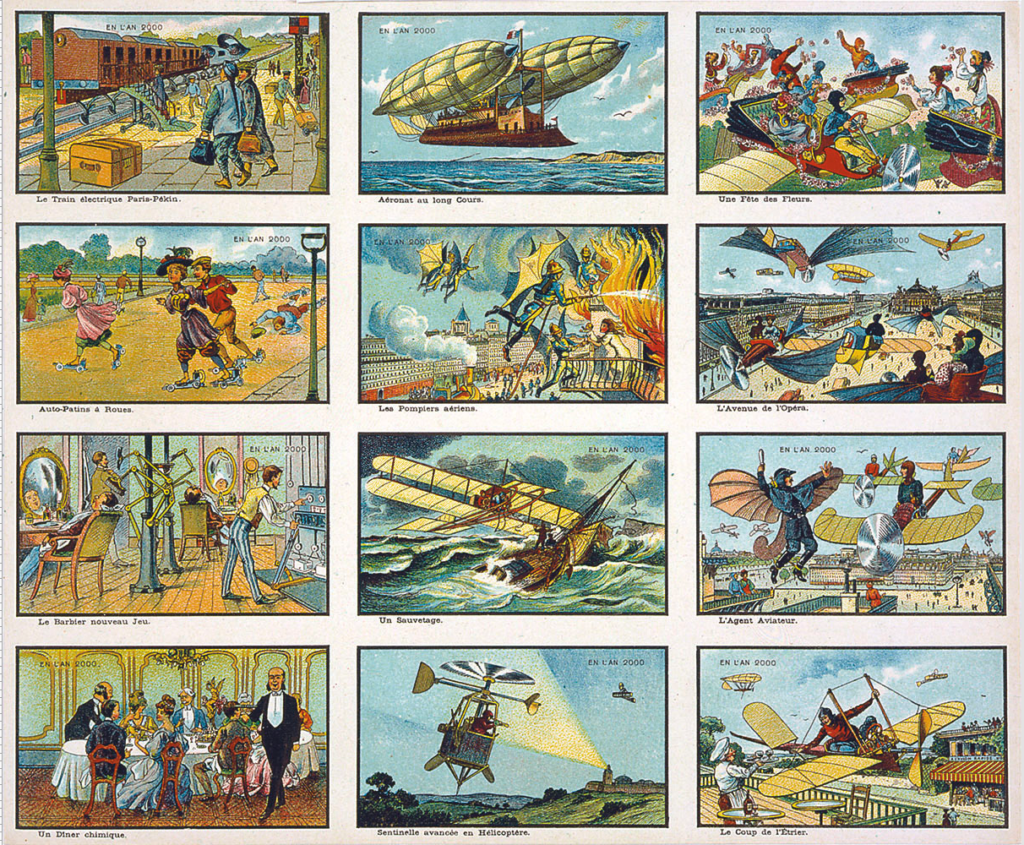
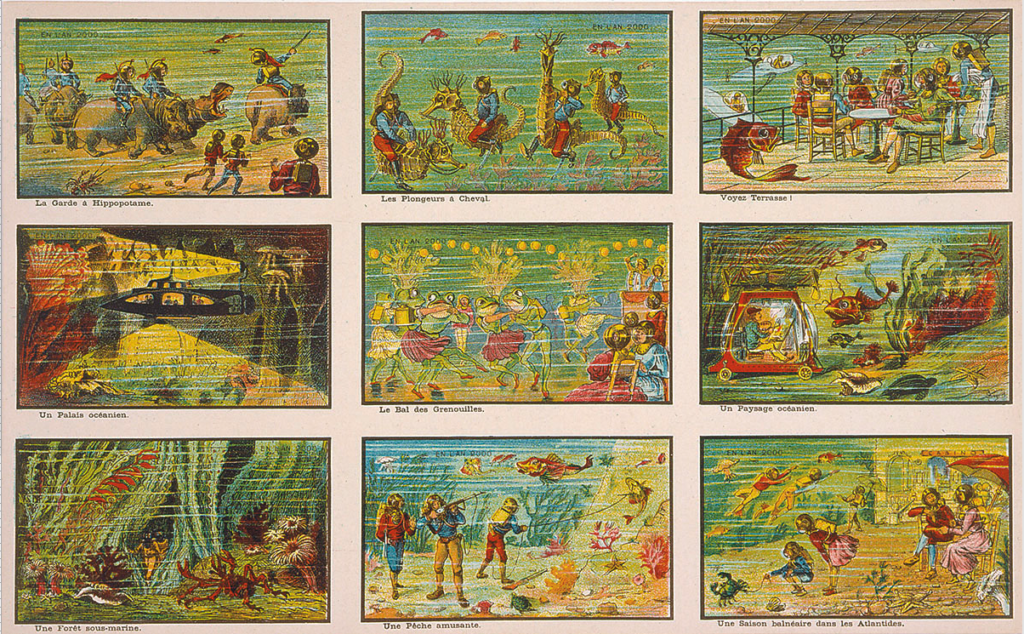
The Stollwerk chocolate company issued a set: here are some of them . . .
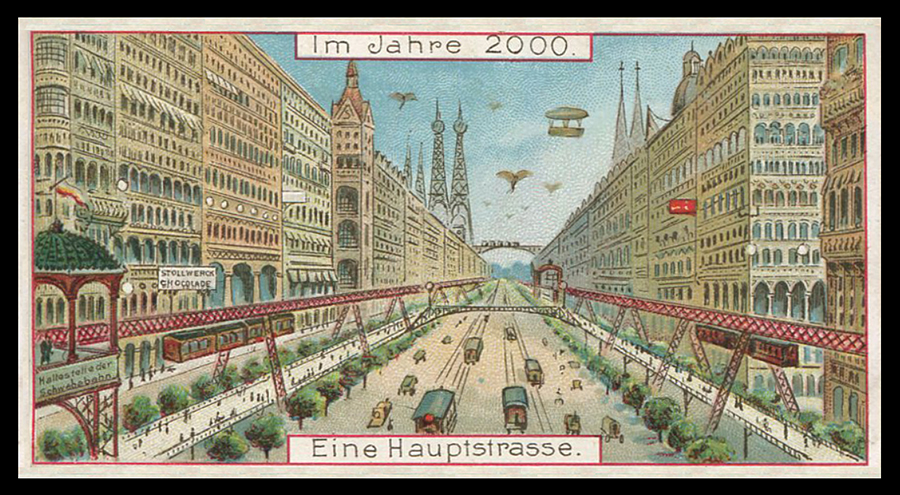
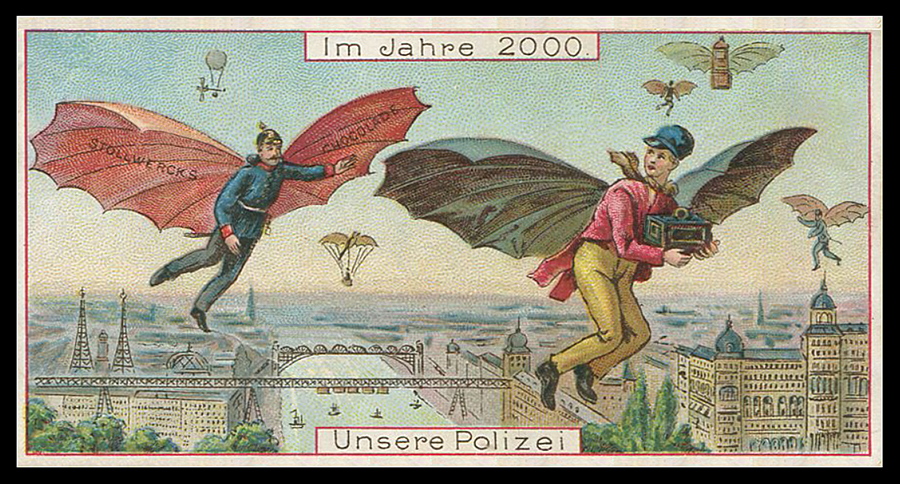
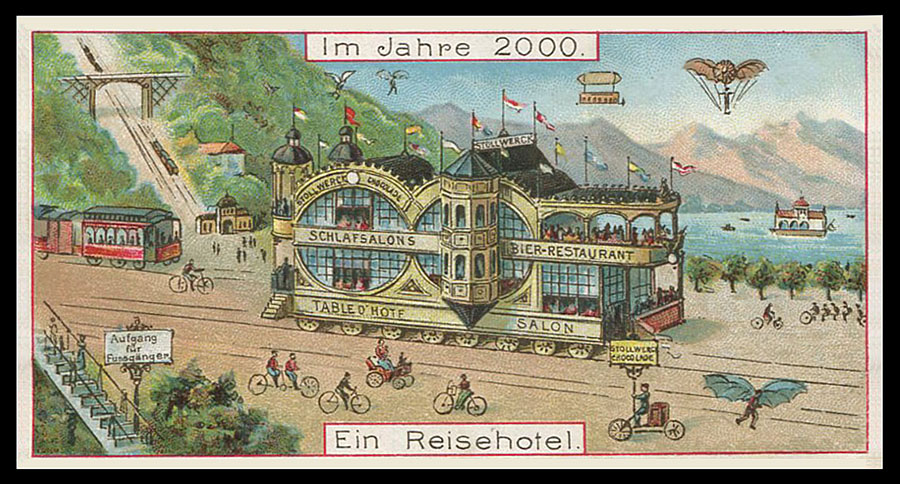
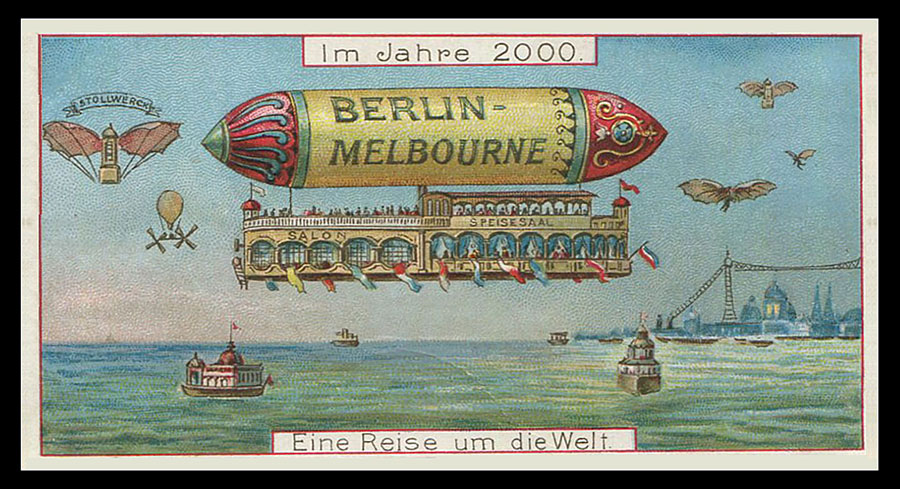
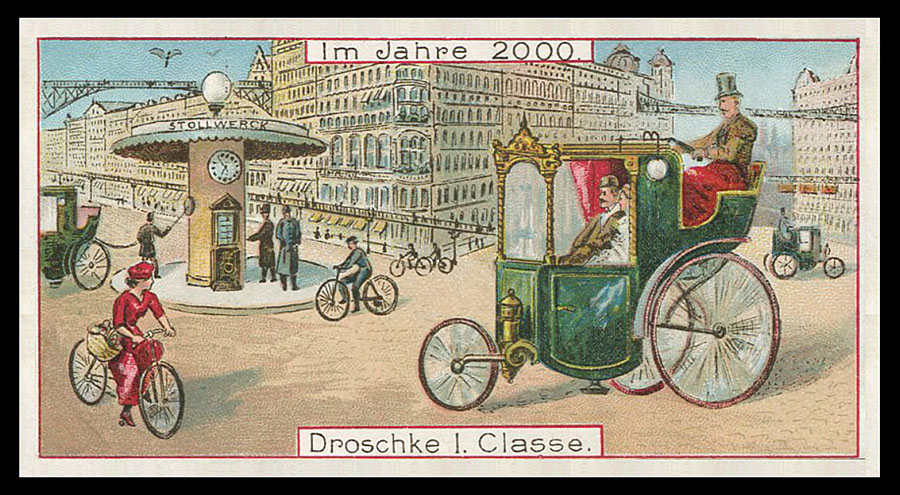
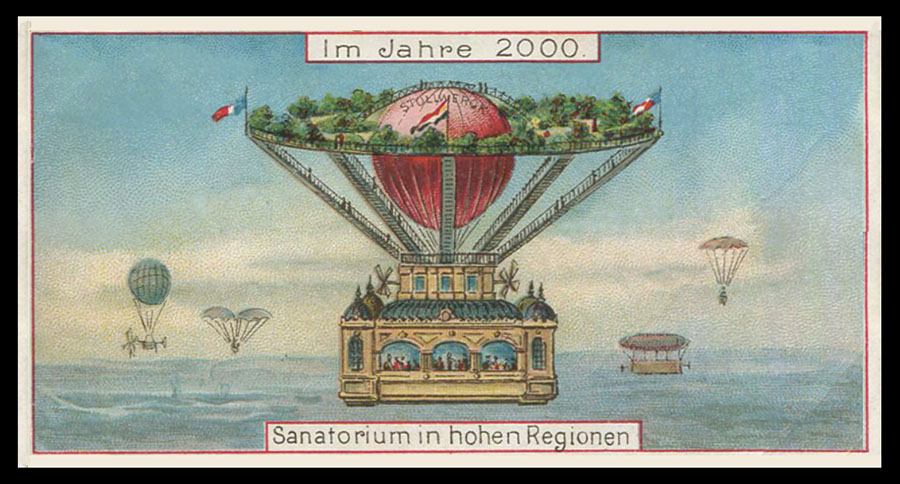
And there were various other predictive sets . . .
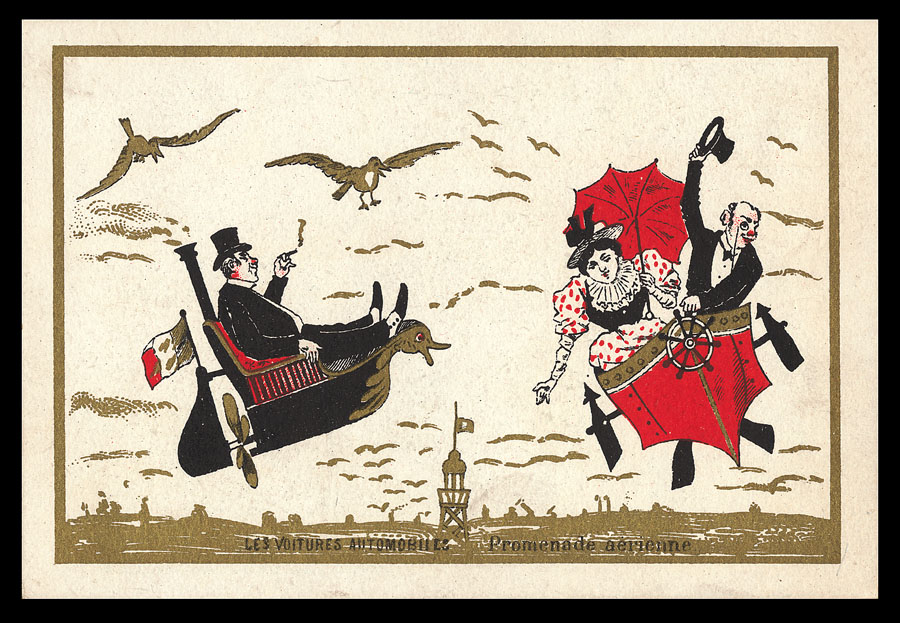
In 1936, the General Petroleum Corporation put out a set which celebrated current technological advances (but did not predict future developments) . . .
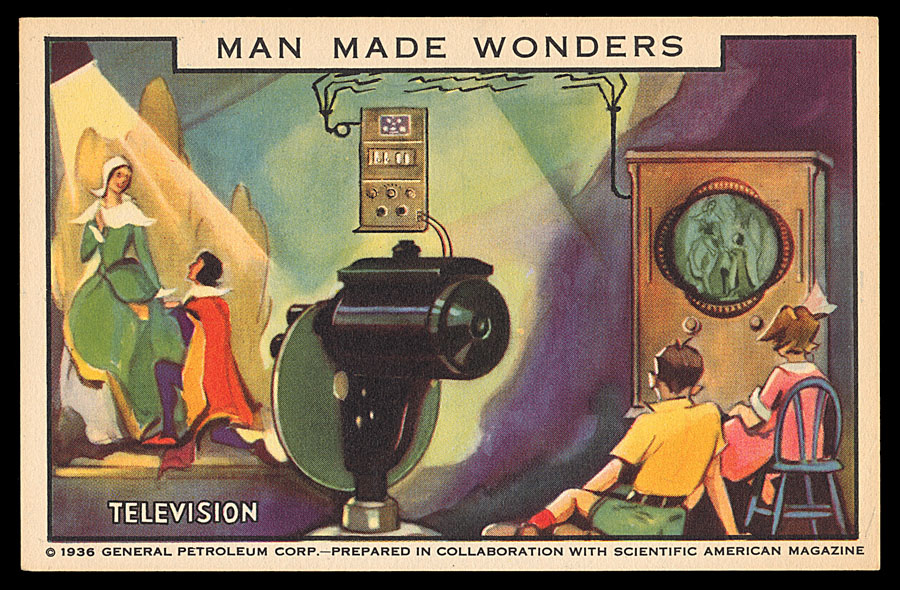
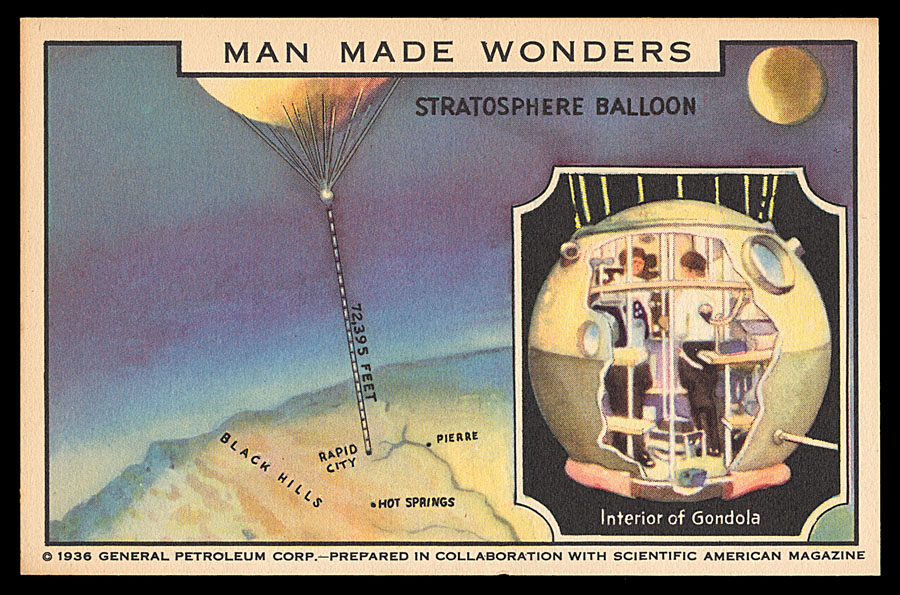
In or about 1950, Aiglon, a Belgian chocolate company, put out a set of 130 cards predicting advances by the Year 2000 (only 50 years hence, at that point), and an album in which to mount the cards as they were collected. In this shorter time frame such predictions may have been a tad less difficult to make accurately, and many of Aiglon’s prognostications have since come to pass. To me, the most striking one may be that the robot on the cover bears a striking resemblance to 3CPO from “Star Wars”!
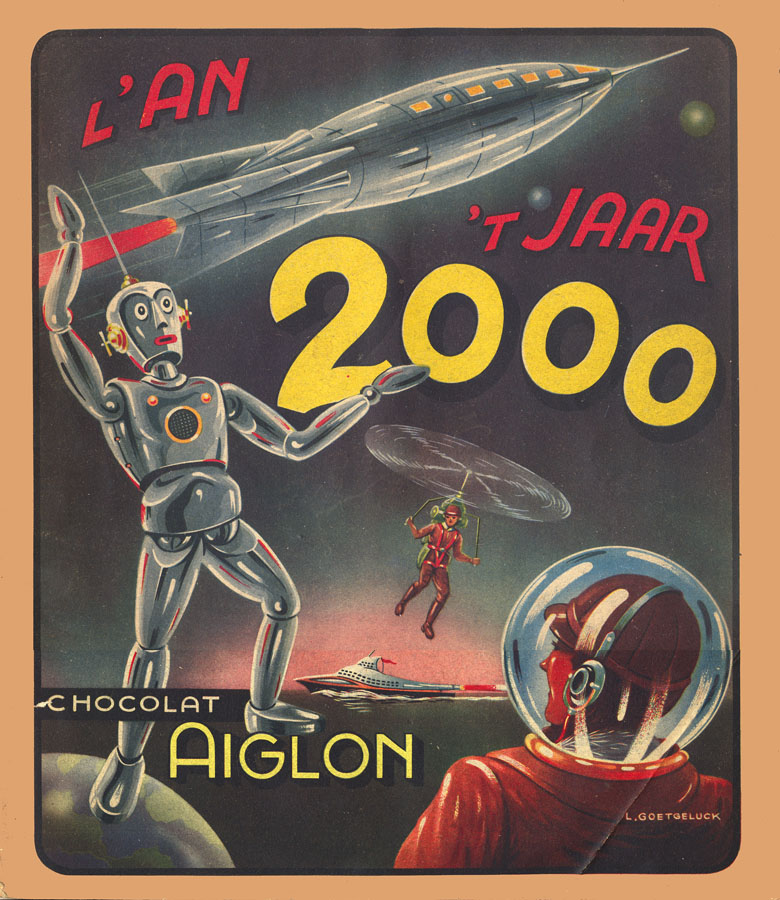
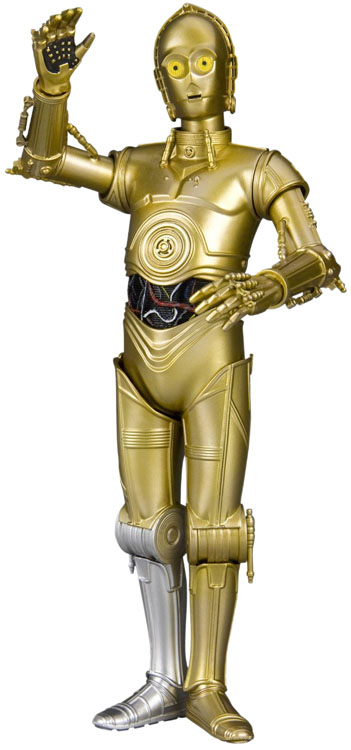
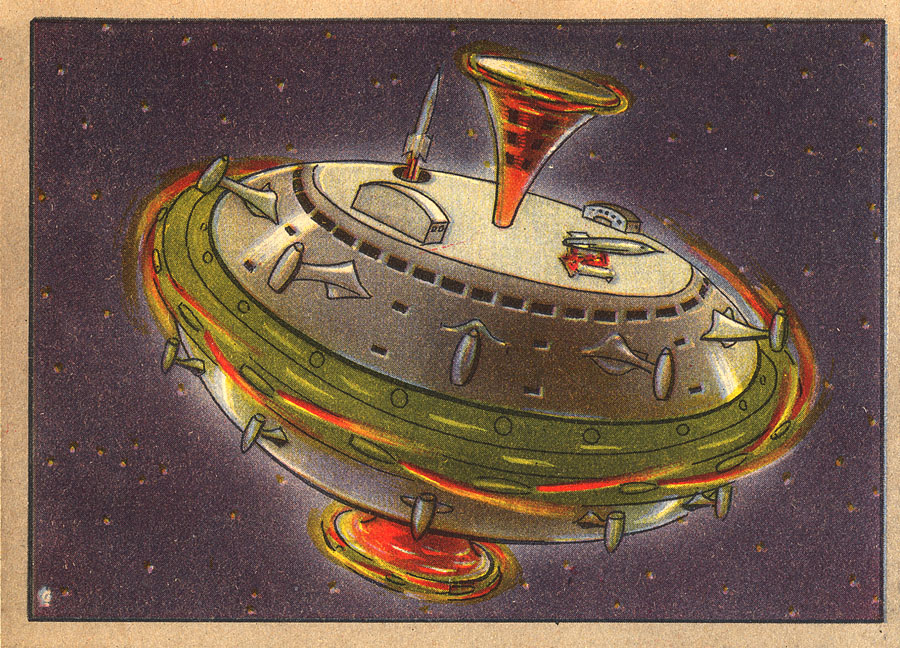
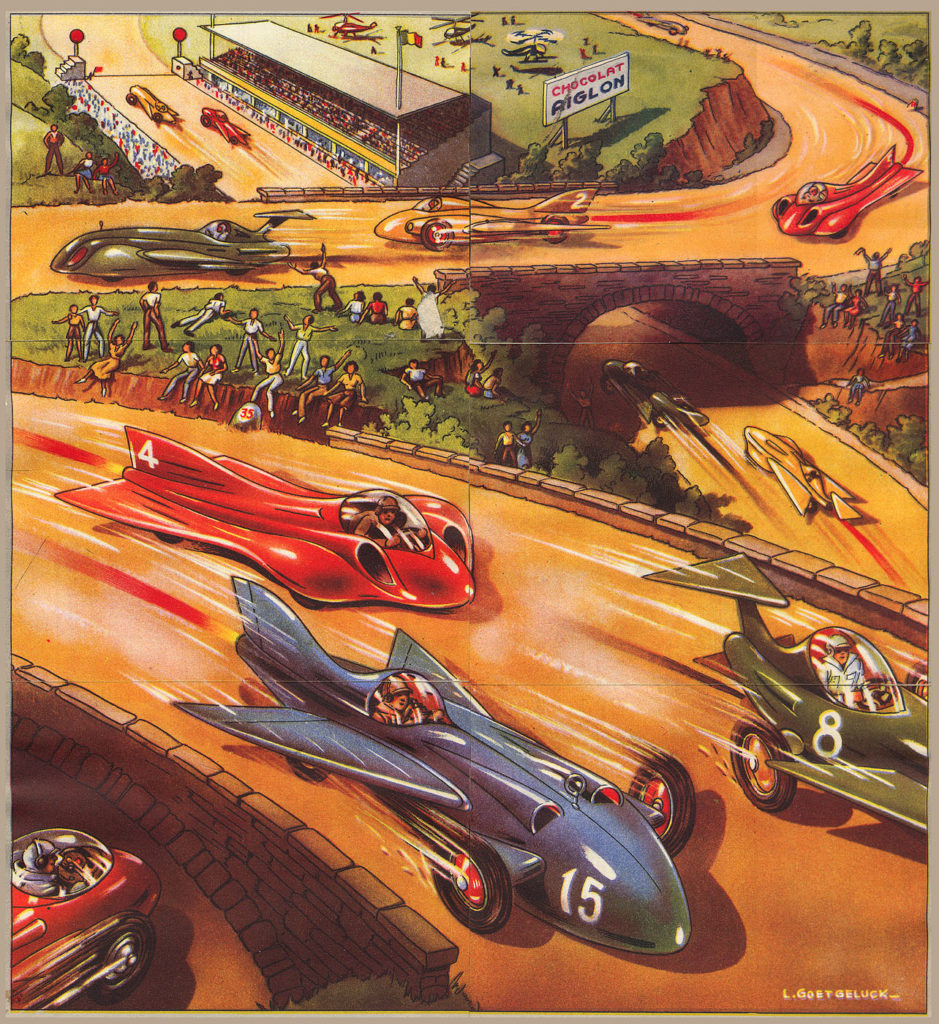
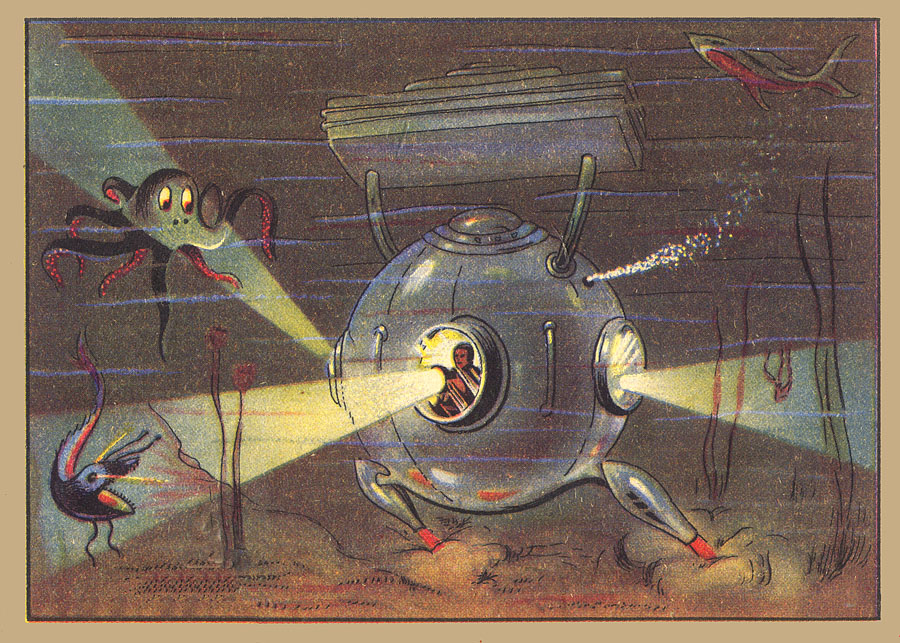
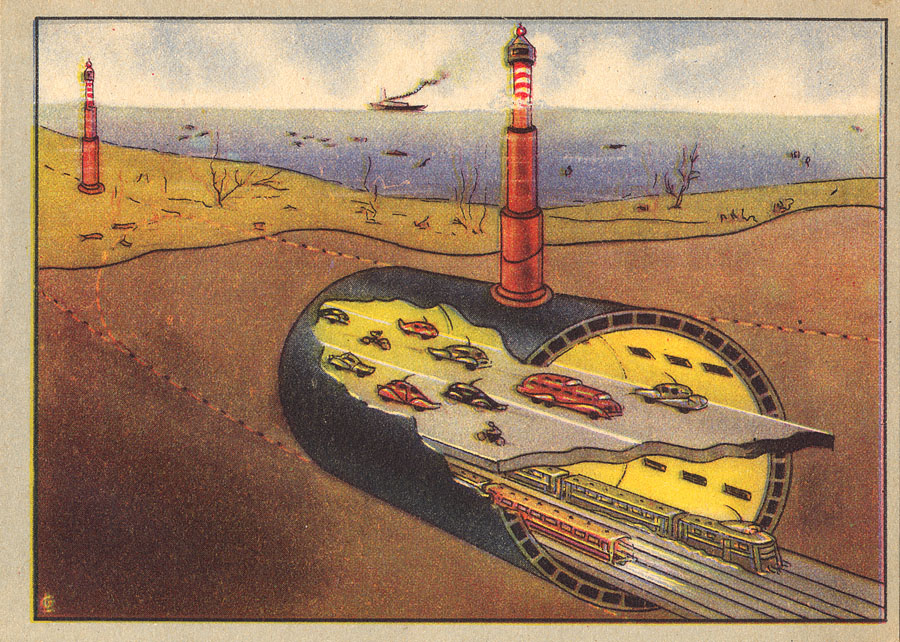
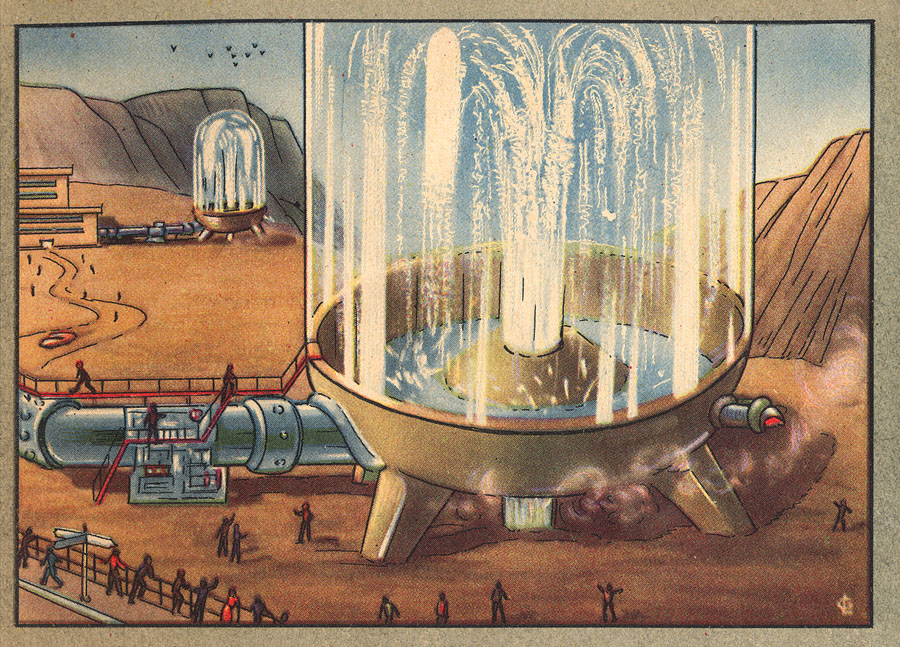
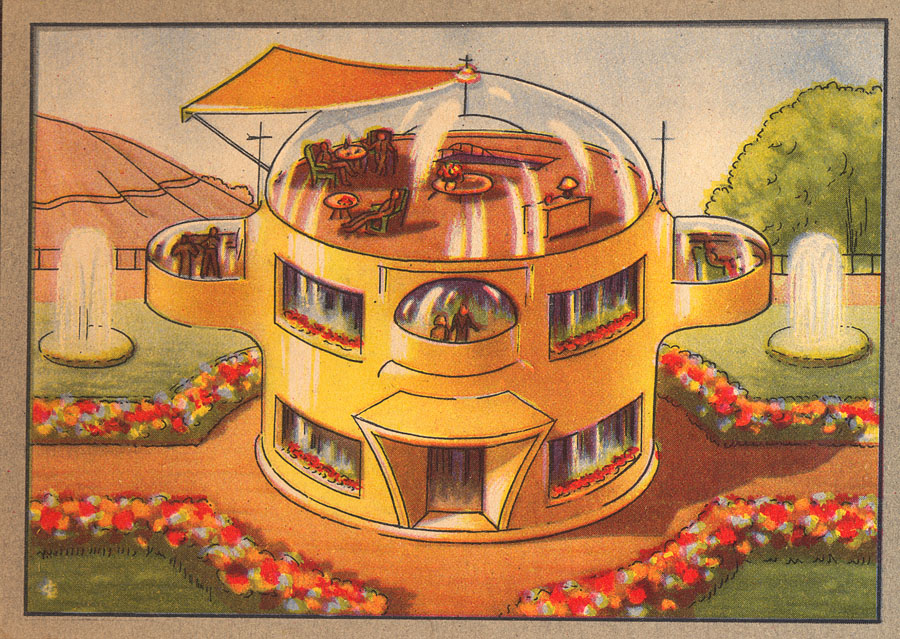
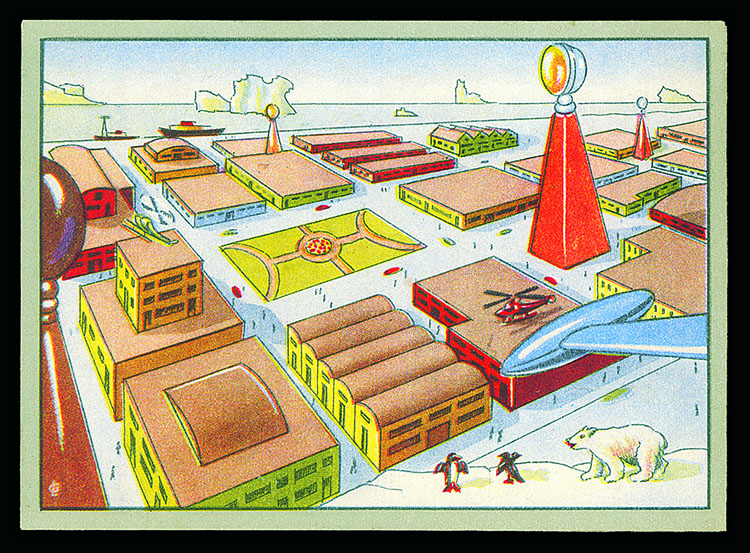
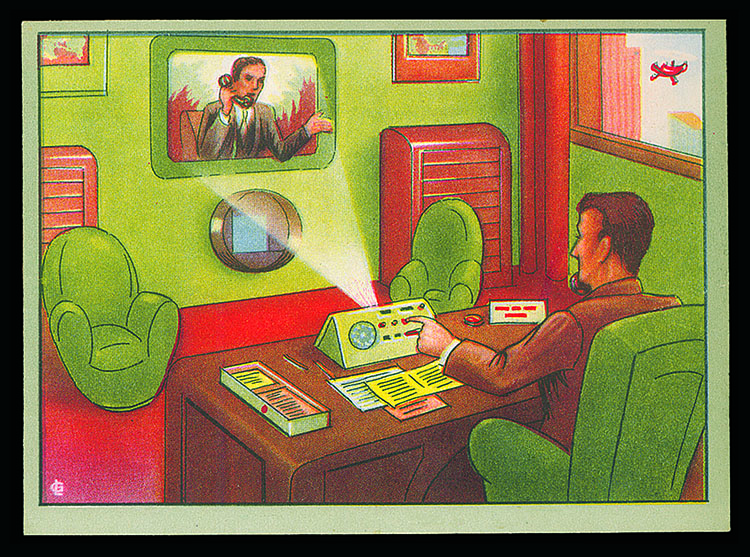
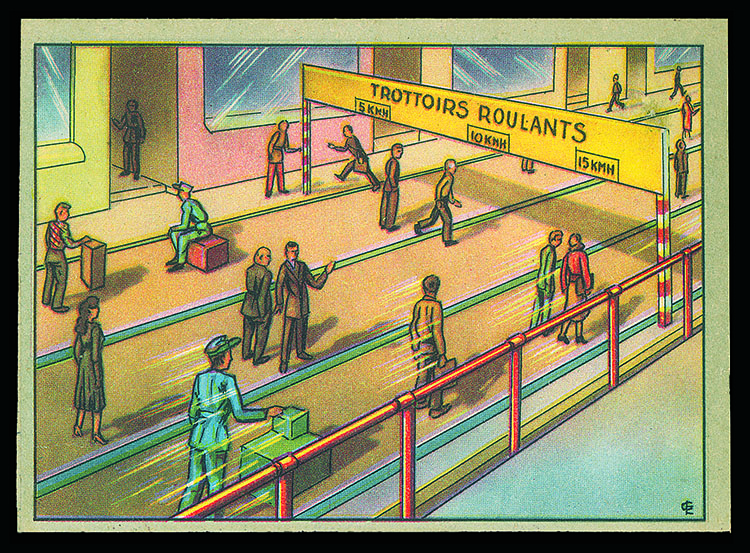
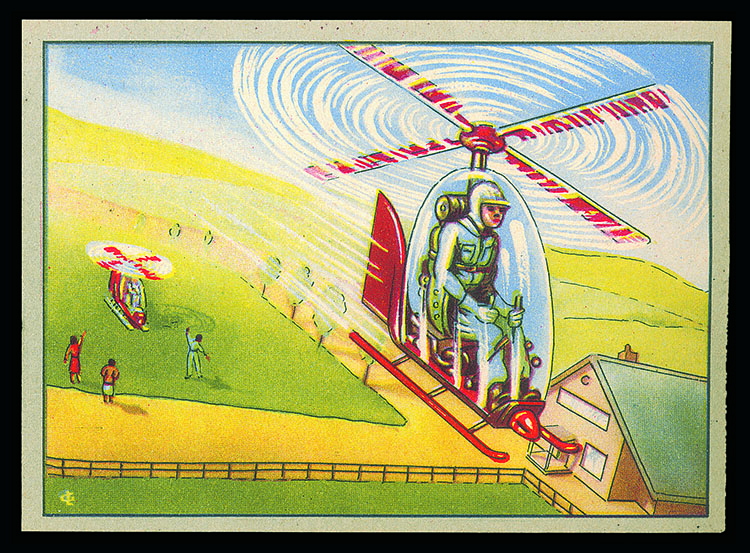
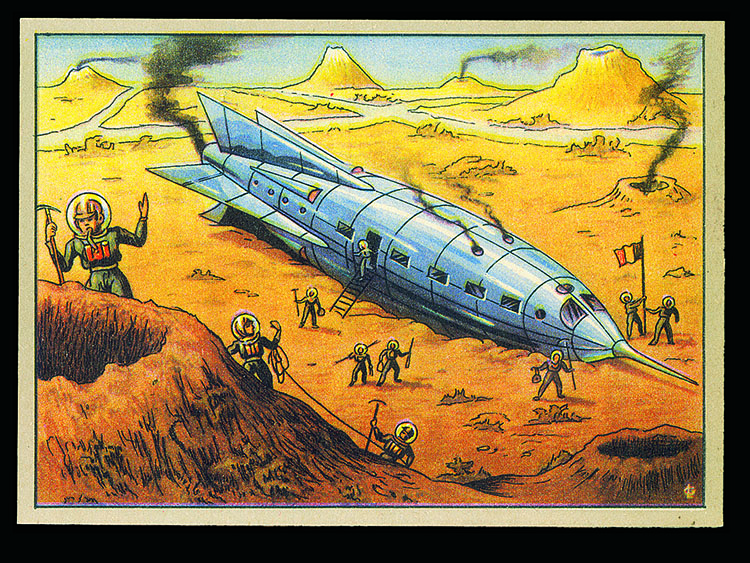
Here are some US postage stamps I designed back in the late 1980s, anticipating some future modes of mail delivery . . .
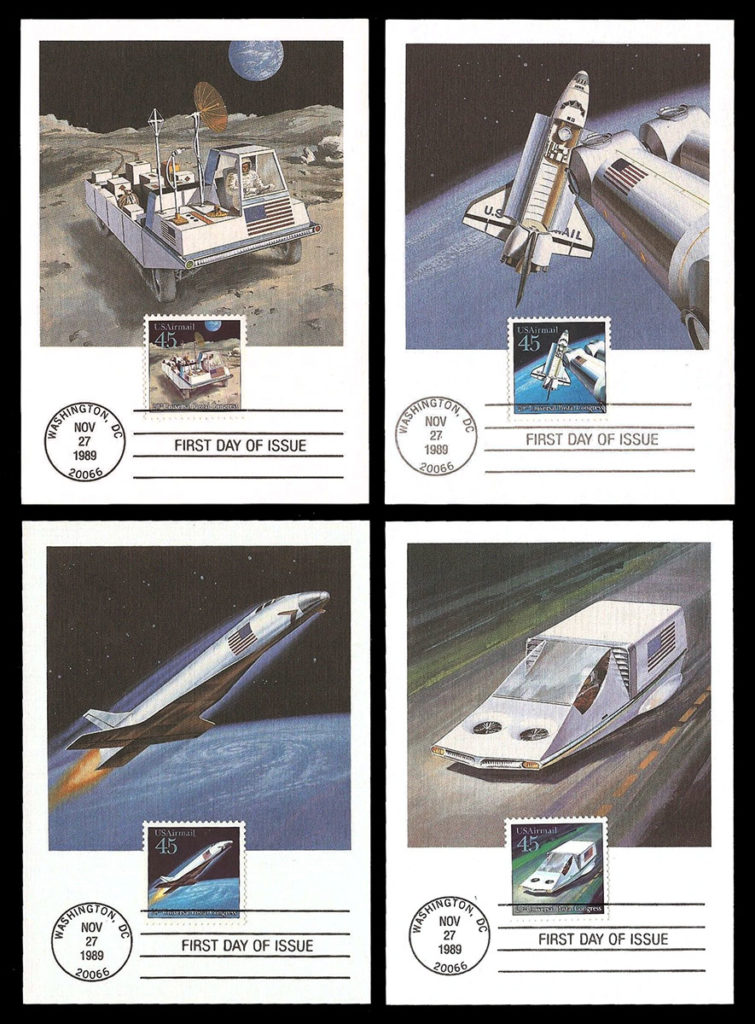
And finally, for now, I note that there are many futuristic postcards . . .
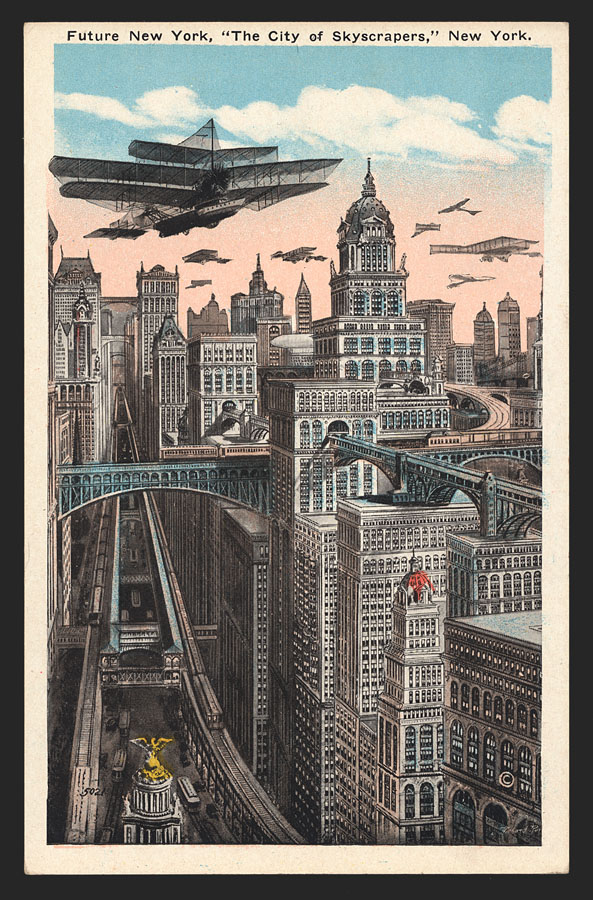
This entire wild and wonderful world of technological advances and future science and/or science fiction will be grist for the mill in Greenwich, come next March! Join us!
THIS JUST IN . . . ESA Board member Tamar Zimmerman (who also supplied the Stollwerks cards shown above) sent along this great cover from the 1905 LIFE magazine Auto Issue, which takes a stab at looking ahead a thousand years; when, apparently, ladies would have pet lap horses . . .
